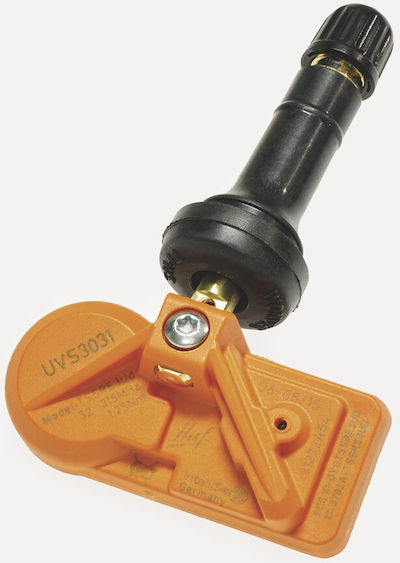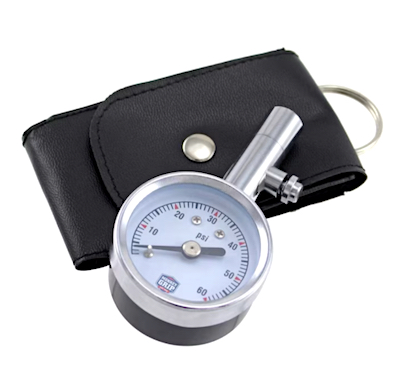Contents
Typically, the driver’s door label indicates the preferred tire pressure, which might differ for the front and rear wheels. Remember, after you fill the tires with the correct air pressure, that air level is subject to change.
- Tire air pressure increases when outdoor temperatures rise.
- Likewise, the tire pressures drop when temperatures decline.
- Air pressure can also drop from a leak from a loose tire valve stem or a slight imperfection in the wheel rim.
Those are a few reasons why monitoring your tire pressures is critical. Proper tire pressure is also a matter of driving safety. Unfortunately, according to the National Highway Traffic Safety Administration (NHTSA), only 19 percent of motorists keep their tires at the correct pressure.
TPMS to the Rescue
Motorists should manually check tire pressure about once a month. But with a tire pressure monitoring system, you don’t have to rely strictly on performing this task manually. TPMS works every time you hit the road and warns if the vehicle’s tire pressure falls below the recommended level.

TPMS sensor
NHTSA has required a TPMS in most vehicles since 2008. These devices alert a driver if the tire is underinflated by 25 percent.
There are two basic types of TPMS:
- Direct – A direct TPMS device uses sensors mounted within the tire valve or on the wheel. When a tire rotates, the sensor is activated to check the air pressure. Basic systems activate a dashboard warning when the tire pressure drops to a minimum. More advanced systems display the psi for each tire in real-time.
- Indirect – With an indirect system, the car uses sophisticated algorithms to sense tire rotation and circumference. These systems use wheel speed sensors and accelerometers to determine the tire’s dimensions. When a tire loses air pressure, the circumference drops, which is detected by the car’s computers, triggering the TPMS warning device.
TPMS in Action
When a driver starts a car, all the dashboard warning icons, including the TPMS underinflation warning symbol, temporarily light up to indicate the system is in place and functional. If the light starts to flash on and off—or you hear a warning chime—your tire is probably underinflated.

Tire pressure warning light
In that case, without delay, add air until the tire is properly inflated.
- Check the tire to see if there is any noticeable damage.
- Listen for air escaping from the tire.
- If everything seems normal, continue and keep an eye on the air pressure to ensure that it remains at the required levels.
The NHTSA requirement for a TPMS has been in effect for passenger cars and light trucks for nearly two decades. However, older cars might not be outfitted with a TPMS device. Many RVs and trailers also lack a TPMS system.

An aftermarket TPMS kit adds tire pressure monitoring to older vehicles.
If your car did not come with a TPMS, you can easily add one after the fact. Most TPMS retrofit kits use sensors that attach to the tire valve and a display that can be hard-wired or plugged into a 12-volt outlet, like a cigarette lighter.
Why It’s Important to Use a TPMS Relearn Procedure
When you install new tires (or rotate them), the TPMS system needs to “relearn” where the devices are and how they communicate. A TPMS relearn is essential if you recently replaced the valve sensor.

Tire pressure gauge
The first step after installing new tires is to inflate them to the correct pressure. Use a tire pressure gauge to confirm. Some newer models have a reset procedure built into their cars. The process varies from car to car, but most procedures are outlined in the owner’s manual. Here are the highlights:
- Push the reset button under the steering column (or in the menu system). It’s best to press that button when the vehicle is stationary with the ignition off. Then, as you begin to drive, the TPMS recalibrates the settings based on the new pressure.
- Some models use menu settings on the dashboard to initiate the reset process. Your key fob might be used to initiate the relearn process. Consult with the owner’s manual for details.
If you have an older vehicle that doesn’t have built-in relearn options, a TPMS relearn tool can help teach the vehicle about the proper tire pressure, tire locations, and identification numbers.
Shop now for tire pressure gaugesProgrammable Devices
Programmable, multi-application TPMS sensors are more flexible because the same sensor can be used for many different vehicles. Many shops have programmable tire sensors so they can stock a few sensors that cover most vehicles instead of hundreds of vehicle-specific sensors.
You might also prefer a programmable sensor. For example, if you want a set of snow tires to be used by different vehicles, a programmable sensor means the tire with its TPMS can be swapped. TPMS programming devices are usually more expensive. That’s because they employ technology to read the sensor ID number, battery level, tire pressure, and tire temperature. Some offer the ability to clone the settings from one TPMS to another.
Shop now for TPMS sensors




